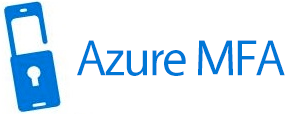The CLOUD IT offers a daily news digest of all the best breaking IT security news stories. Our mission is to make IT security digestible and interesting through our daily news Cyber Bites and our Insight section, which offers a platform to the most interesting and innovative voices in the security industry.
Submitting content
At CLOUD IT we welcome content from contributors around the world so please just get in touch with your suggestions by emailing our editorial team
Language: Currently we only publish in English.
Cloud-IT-Professionals
Hyderabad India
+91-xxxxxxxxxx
info@cloud-itpro.com
Do you have any queries regarding Cloud IT Solutions and, if you want to talk about our services then you can write to us here
Understanding the Importance of Term & Condition Content: A Comprehensive Guide
In today’s digital age, where online interactions have become an integral part of our lives, the significance of term and condition content cannot be overstated. Whether you’re a business owner, a website operator, or an app developer, having well-crafted and transparent terms and conditions is crucial. In this article, we’ll delve into the intricacies of term and condition content, exploring its purpose, components, and the role it plays in fostering trust and compliance.
Table of Contents
Introduction
- Defining Term & Condition Content
- Importance in the Online Landscape
Key Components of Term & Condition Content
- Clear and Concise Language
- User Rights and Responsibilities
- Limitations and Liabilities
- Privacy and Data Usage
Building Trust and Transparency
- Establishing Credibility
- Ensuring User Consent
- Mitigating Legal Risks
Tailoring to Your Specific Needs
- Customization for Different Businesses
- Adapting to Industry Standards
- Collaboration with Legal Professionals
The User Experience Perspective
- Simplifying Language for Readability
- Highlighting Important Clauses
- Enhancing Navigability
Legal Compliance and Protection
- Adhering to Applicable Laws
- Shielding Against Misuse
- Resolving Disputes Effectively
Updates and Notifications
- Informing Users of Changes
- Optimal Methods of Communication
- Timely Implementation of Amendments
Frequently Asked Questions (FAQs) about Term & Condition Content
- What happens if users don’t read the terms and conditions?
- Can I copy terms and conditions from another website?
- How often should I update my terms and conditions?
- Are terms and conditions legally binding?
- What should be included in the privacy policy section?
Introduction
Defining Term & Condition Content
Term and condition content, often referred to as terms of service or terms of use, is a legal document that outlines the rules, regulations, rights, and obligations governing the relationship between a service provider and its users. These terms establish the ground rules for using a website, app, or platform, ensuring a fair and secure experience for all parties involved.
Importance in the Online Landscape
In the digital realm, where virtual transactions and interactions are the norm, term and condition content serves as a protective shield for both users and businesses. It sets expectations, clarifies responsibilities, and mitigates potential conflicts. Without these terms, misunderstandings could arise, leading to disputes that might have legal consequences.
Key Components of Term & Condition Content
Clear and Concise Language
One of the core principles of effective term and condition content is clarity. Legal jargon can be intimidating and confusing for users, leading to a lack of understanding. Crafting terms in simple and concise language ensures that users can comprehend their rights and responsibilities without the need for a law degree.
User Rights and Responsibilities
An essential aspect of term and condition content is outlining what users can expect from the service and what is expected from them in return. This includes things like user conduct, prohibited activities, and the scope of services provided.
Limitations and Liabilities
Clearly stating limitations of liability protects businesses from potential legal actions. It’s important to specify what responsibilities the service provider holds and what situations are beyond their control.
Privacy and Data Usage
In an era where data privacy is paramount, clearly articulating how user data will be collected, stored, and used is critical. This section addresses concerns about privacy and can help establish trust between users and the platform.
Building Trust and Transparency
Establishing Credibility
A transparent and well-defined set of terms and conditions builds credibility. When users see that a business has taken the time to create fair and reasonable terms, they are more likely to trust the platform.
Ensuring User Consent
Users need to consent to the terms before using the service. This consent can often be obtained through the use of checkboxes or pop-up notifications, ensuring that users are aware of and agree to the terms.
Mitigating Legal Risks
Well-crafted term and condition content can help prevent legal disputes. By outlining the rights and responsibilities of both parties, potential areas of conflict can be addressed proactively.
Tailoring to Your Specific Needs
Customization for Different Businesses
Every business is unique, and their terms and conditions should reflect that. Generic templates might not cover all the nuances of a particular business model, so customization is key.
Adapting to Industry Standards
While customization is important, adhering to industry standards and best practices is equally vital. This ensures that the terms are in line with what users expect and reduces the risk of legal challenges.
Collaboration with Legal Professionals
Creating effective term and condition content often requires legal expertise. Collaborating with legal professionals ensures that the terms are legally sound and offer comprehensive protection.
The User Experience Perspective
Simplifying Language for Readability
To engage users and make the terms more approachable, using plain language is crucial. Avoiding complex legalese can improve readability and understanding.
Highlighting Important Clauses
Not all clauses are created equal. Important terms, such as refund policies or dispute resolution procedures, should be highlighted for easy identification.
Enhancing Navigability
Long blocks of text can be overwhelming. Breaking the terms into sections with clear headings and subheadings enhances navigability and makes finding specific information effortless.
Legal Compliance and Protection
Adhering to Applicable Laws
Different jurisdictions have different legal requirements. Ensuring that your terms and conditions comply with relevant laws is essential for avoiding legal troubles.
Shielding Against Misuse
Including clauses that prevent users from misusing the platform or engaging in harmful activities helps protect the platform’s integrity and reputation.
Resolving Disputes Effectively
In the unfortunate event of a dispute, well-crafted terms can provide guidance on how disagreements will be resolved, potentially averting the need for legal action.
Updates and Notifications
Informing Users of Changes
Platforms evolve, and so should the terms. Clearly communicating updates to users helps maintain transparency and keeps them informed about any alterations.
Optimal Methods of Communication
Deciding how to communicate updates, whether through email notifications or in-app alerts, ensures that users are aware of changes to the terms.
Timely Implementation of Amendments
When updates are made, they should be implemented in a timely manner. Giving users reasonable notice before changes take effect prevents any surprises.
Frequently Asked Questions (FAQs) about Term & Condition Content
What happens if users don’t read the terms and conditions?
Ignoring the terms doesn’t exempt users from them. By using the platform, users are presumed to have agreed to the terms, whether they read them or not.
Can I copy terms and conditions from another website?
It’s not advisable. Each business has unique aspects that might not be covered in another entity’s terms. It’s best to craft terms that reflect your specific needs.































